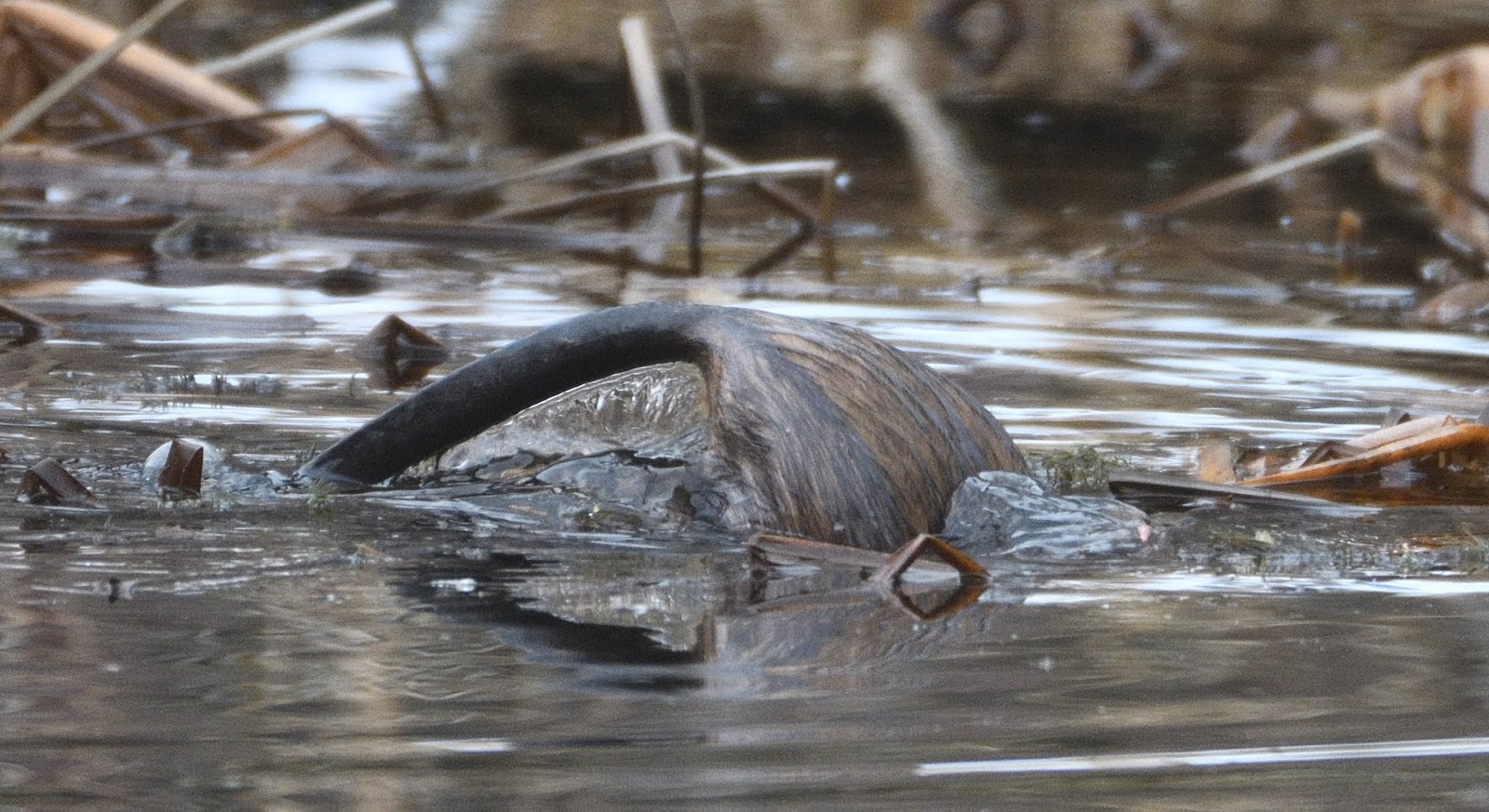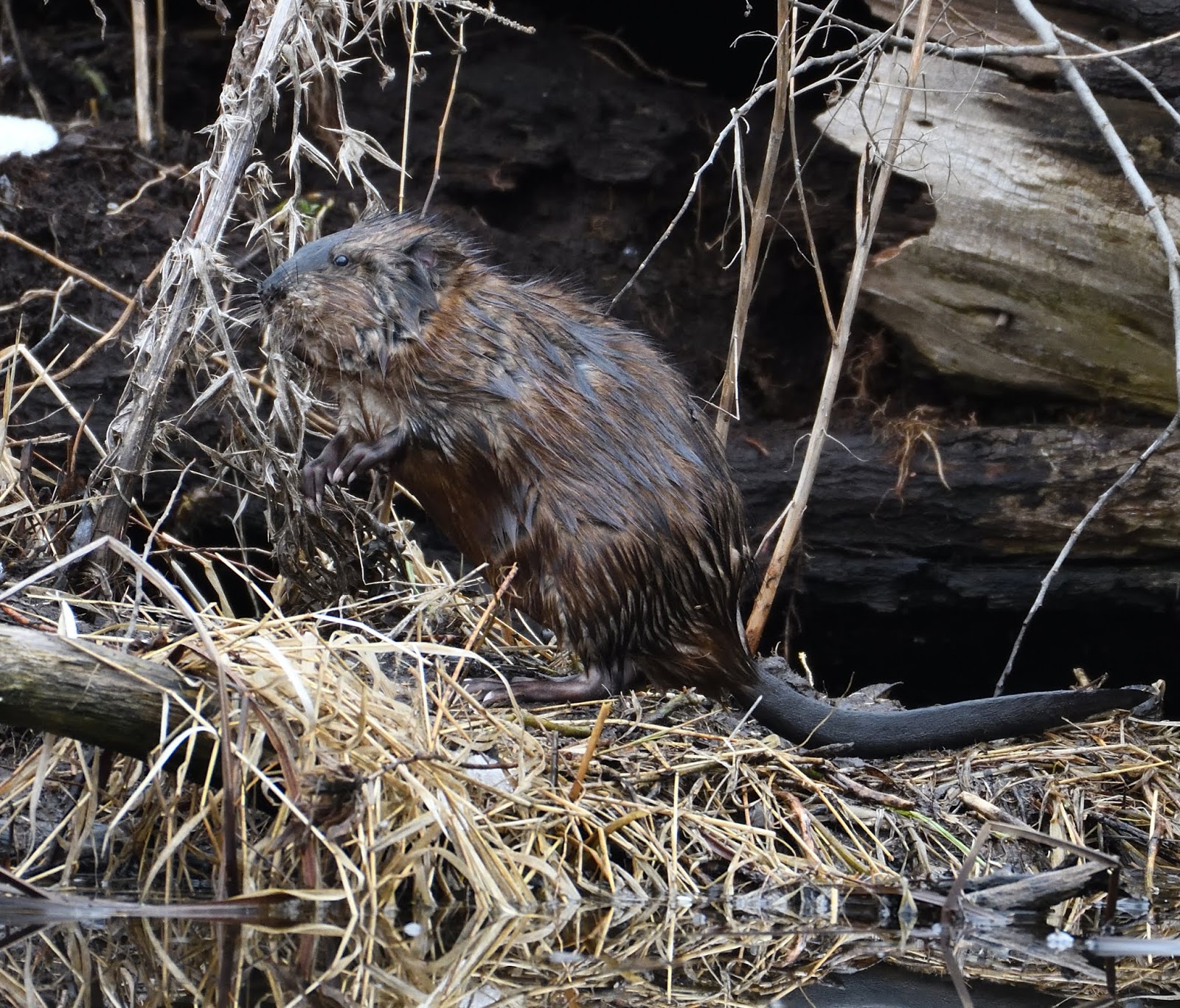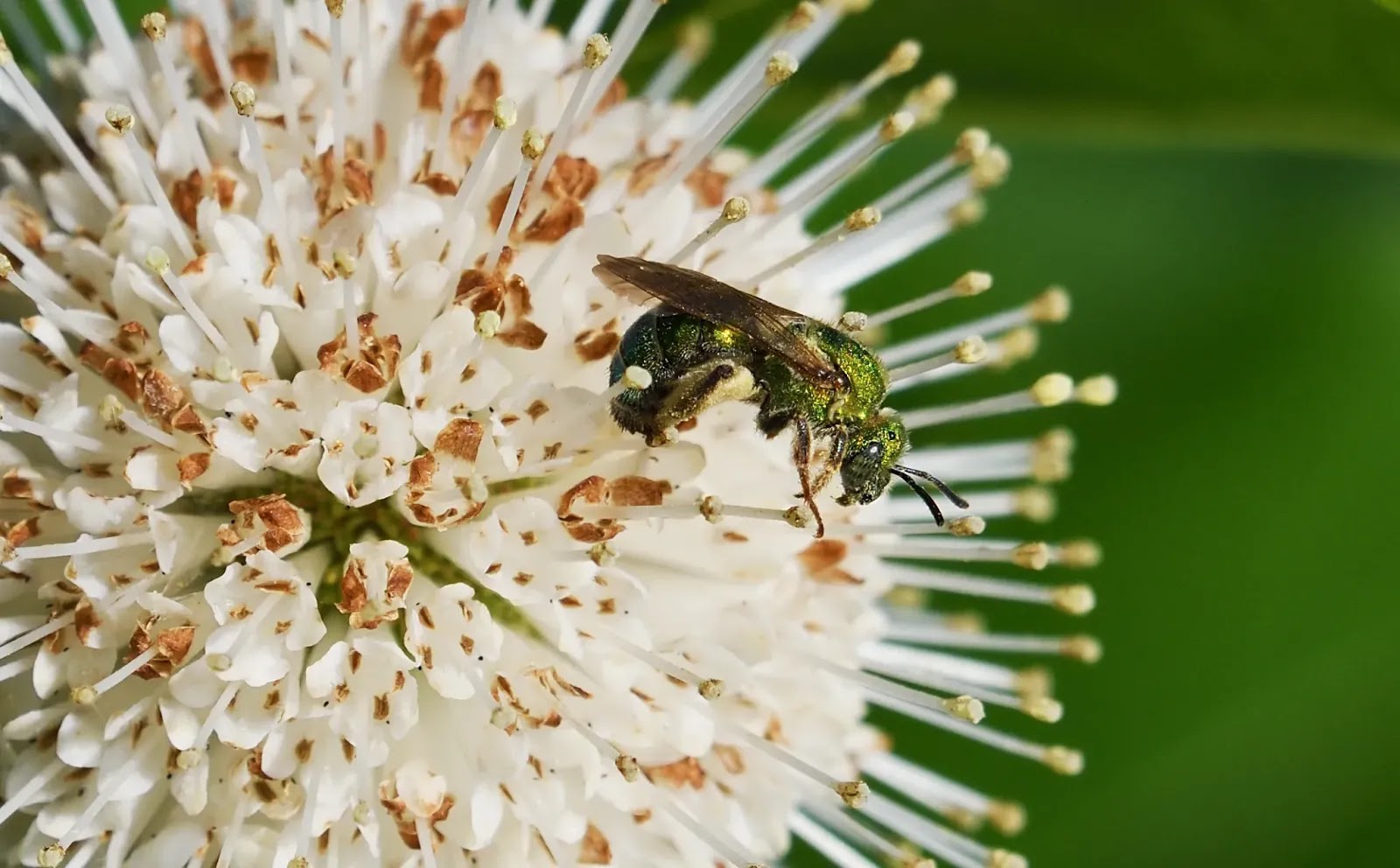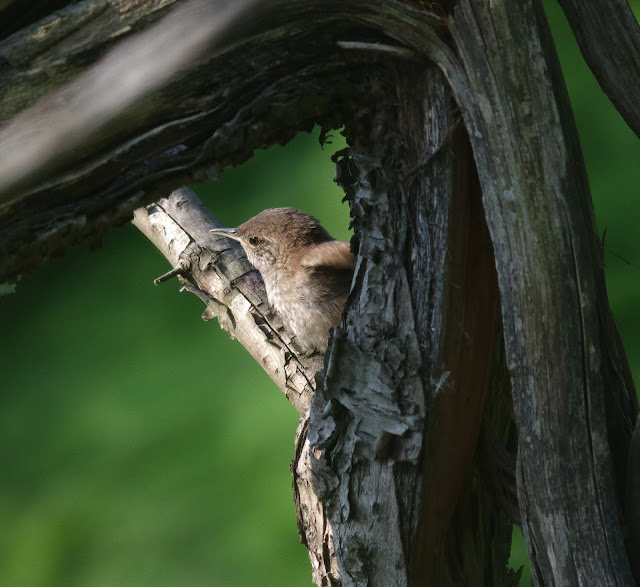Muskrat on the Move
Today was my first sighting this year of a great blue heron at Lakeside Park. I was, however, unable to get a clear shot, as I was under the cover of the branches of the trees on the far side of the lake when the heron flew up. I did see it though and have a very blurred photo as proof. I also had my first sighting of 2020 of this strange-looking creature.
The lake has obviously completely thawed now, all the way down to the stream that runs away from the lake. But what of the mysterious creature with the tail of an eel. It is, of course, a muskrat and not strange at all but beautifully adapted to its lifestyle.
A little wash, and then a scratch here and there with those incredible hind feet... so good!
And then off into the water.
The muskrat may not look like it'd be a good swimmer with that lumpy looking body, but it is a great swimmer. The muskrat's flat tail is used to propel it through the water.
And it also has the added advantage of those huge hind feet which this photo shows off so well. Its hind feet also have a fringe of special hairs, making the muskrat a very effective swimmer. The muskrat can move really fast in water if it needs to.
Sometimes it's hard to tell at a distance if you're watching the beaver or muskrat in water and the body is the giveaway. You will not see the body of the beaver when it swims unless it dives, only its head.
The muskrat can use its front feet like hands to grasp onto its food, in a similar fashion to a raccoon.
Also just like a raccoon, the muskrat always washes its food before eating.
The muskrat is able to seal off its nose, mouth and ears while underwater.
The waterways are used to access the muskrats food source which, although the muskrat is an omnivore, is mainly plant-based.
After disappearing for some time underwater, the muskrat surfaced with the stem of a reed.
And then began the business of cleaning.
Before eating the now clean stem of the reed.
Fresh and delicious!
And there you have it, the muskrat, a quite incredible aquatic member of the rodent family.
I watched the muskrat for some time as it continued to dive underwater for food.
Until it came up with a rhizome that was a little bigger than the rest.
And took it off to eat in peace, without an audience.
Copyright © wildlakeside.blogspot.com 2020 Scott Atkinson All Rights Reserved.
The lake has obviously completely thawed now, all the way down to the stream that runs away from the lake. But what of the mysterious creature with the tail of an eel. It is, of course, a muskrat and not strange at all but beautifully adapted to its lifestyle.
The muskrat may not look like it'd be a good swimmer with that lumpy looking body, but it is a great swimmer. The muskrat's flat tail is used to propel it through the water.
And it also has the added advantage of those huge hind feet which this photo shows off so well. Its hind feet also have a fringe of special hairs, making the muskrat a very effective swimmer. The muskrat can move really fast in water if it needs to.
Sometimes it's hard to tell at a distance if you're watching the beaver or muskrat in water and the body is the giveaway. You will not see the body of the beaver when it swims unless it dives, only its head.
Now that the muskrat is out of the water let's take a look at that amazing tail. The tail has scales instead of hairs and is flattened laterally, in completely the opposite direction to the beaver.
Also just like a raccoon, the muskrat always washes its food before eating.
The muskrat is able to seal off its nose, mouth and ears while underwater.
As I mentioned earlier, the muskrat's body sits much higher than the beavers when swimming.
The waterways are used to access the muskrats food source which, although the muskrat is an omnivore, is mainly plant-based.
After disappearing for some time underwater, the muskrat surfaced with the stem of a reed.
And then began the business of cleaning.
Before eating the now clean stem of the reed.
Fresh and delicious!
And there you have it, the muskrat, a quite incredible aquatic member of the rodent family.
I watched the muskrat for some time as it continued to dive underwater for food.
And took it off to eat in peace, without an audience.























Comments
Post a Comment